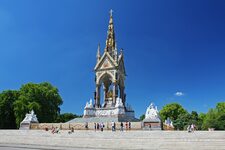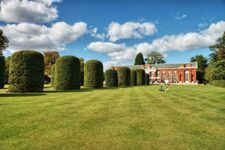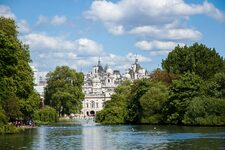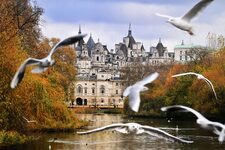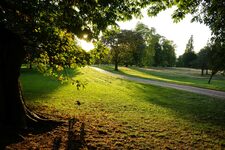Exploring the Timeless Beauty: Hyde Park's History and Architecture
London, a city steeped in history and culture, is home to a multitude of iconic landmarks that have captured the hearts of tourists for centuries. One such gem, nestled in the heart of this bustling metropolis, is Hyde Park. In this blog, we invite you on a journey to explore the rich history and captivating architecture of this beloved oasis. Hyde Park's enchanting past and stunning structures are sure to leave you spellbound.
Hyde Park: A Glimpse of Tranquility in the Heart of London
If London's bustling streets and towering skyscrapers overwhelm you, Hyde Park is the perfect place to seek refuge. Spanning over 350 acres, this sprawling green expanse offers a serene escape from the urban chaos. But, Hyde Park is not just about lush lawns and serene lakes; it has a story to tell.
A Walk Through History
From Hunting Ground to Royal Retreat
Hyde Park's history dates back to 1536 when King Henry VIII acquired this land for hunting deer. Over the years, it evolved from a royal hunting ground to a place of public leisure. The park was opened to the public in 1637 by Charles I, marking the beginning of its transformation into the beloved park we know today.
Speakers' Corner: A Platform for Free Speech
One of Hyde Park's most iconic features is Speakers' Corner, a historic bastion of free speech and public debate. This tradition began in the mid-19th century when protests and demonstrations were held here. Today, it remains a symbol of free expression, where anyone can voice their opinions on a myriad of topics.
Memorials and Monuments
Hyde Park is dotted with various memorials and monuments that pay homage to historical figures and events. The most prominent of these is the Princess Diana Memorial Fountain, a breathtaking tribute to the People's Princess. As you stroll through the park, you'll come across sculptures and plaques that recount tales of valor, courage, and sacrifice.
Architectural Marvels of Hyde Park
The Serpentine Bridge: A Work of Art
The Serpentine Bridge, designed by George Rennie, is a marvel of 19th-century engineering. Its graceful arches and ornate ironwork provide a picturesque setting for a leisurely walk. Don't forget to capture its timeless beauty in your photographs.
Hyde Park's Grand Entrance: The Queen's Gate
As you enter Hyde Park, you'll be greeted by the majestic Queen's Gate. This ornate gate, a masterpiece of Victorian architecture, was erected in 1897 to commemorate Queen Victoria's Diamond Jubilee. It's an excellent example of the opulent style that characterized the era.
Kensington Palace: A Royal Residence
Nestled on the western edge of Hyde Park, Kensington Palace has a history intertwined with the park itself. This elegant palace, originally a private country residence, became the official home of the British royal family in the 17th century. The architectural finesse and stunning gardens surrounding it make for a truly regal sight.
Hyde Park: A Modern-Day Oasis
While Hyde Park's history and architecture are undeniably captivating, it's also a place that seamlessly blends tradition with modernity. The park hosts numerous contemporary events, from music festivals to open-air theaters, ensuring there's always something exciting happening.
Conclusion
Hyde Park is not just a green sanctuary in the midst of a bustling city; it's a living testament to centuries of history and a canvas showcasing the evolution of architectural styles. From its royal hunting grounds to its Victorian bridges and contemporary cultural events, Hyde Park's allure knows no bounds. As you explore its grounds, take a moment to reflect on the stories etched into its history and the architectural wonders that stand as a testament to the ages. Hyde Park is a place where the past and present harmoniously coexist, offering an unforgettable experience for every traveler who steps foot into its enchanting embrace.

